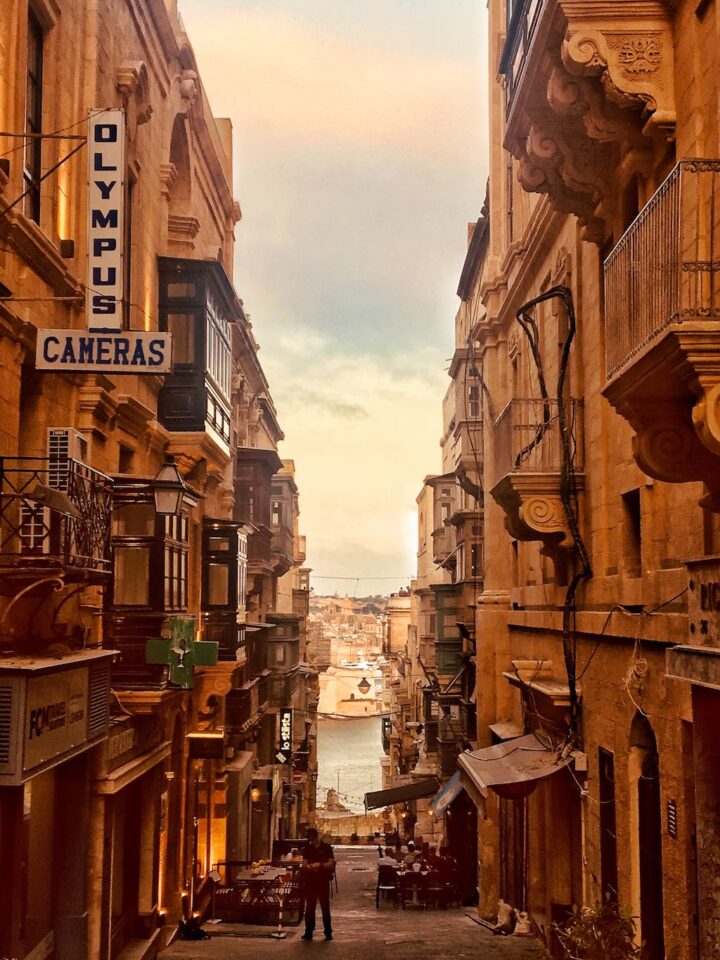Updated on by Lohanna Reis
I still remember the first time I saw the horizon of Valletta as the ferry approached the Grand Harbor. The imposing honey-colored limestone buildings rising sharply from the azure blue waters captivated me instantly. Even after several visits, the initial admiration never fades. There is something about Valletta that always enchants.
As the small capital and cultural heart of Malta, one could argue that Valletta punches well above its weight. Measuring less than 1 square kilometer, everything is within walking distance. Strolling under ornate stone balconies along narrow winding streets positively transports you to medieval times. However, despite the old-world exterior, this UNESCO World Heritage site pulsates with modern energy.
Join me below as I share my tips for experiencing Valletta like a local after numerous personal trips. From savoring the most delicious traditional foods to discovering hidden corners that tourists rarely reach, consider this your essential travel guide to making the most of this magical seaside fortress city.
Orientation and Neighborhoods
Valletta occupies a peninsula flanked by two natural harbors that have always made it a valuable asset. The Knights of St. John fortified the capital after the Great Siege of 1565, surrounding it with gigantic perimeter walls dotted with bastions. Walking along the ramparts rewards you with stunning sea views.
The rectangular grid design makes navigation easy. Republic Street serves as the main thoroughfare running straight from the City Gate to Fort St Elmo. Most attractions branch off from this central artery.
The neighboring Sliema and the Three Cities (Vittoriosa, Cospicua, Senglea) across the Grand Harbor offer alternative bases with easier parking. Valletta’s ferry and frequent bus links make access easy.


Top Attractions
St. John’s Co-Cathedral
This elaborate consecrated church cannot be missed. The richly ornate baroque interior will leave you speechless. The large Caravaggio painting depicting the beheading of St. John the Baptist is an undisputed masterpiece.
However, the real showstoppers are the marble mosaic inlaid tombstones on the floor honoring the Knights of St. John. These colorful works of art display impressive details that narrate the lives of the crusaders resting below.
Be sure to visit the museum housing precious artifacts, such as the reliquary of the Cross of Malta, which contains a fragment of the True Cross on which Jesus was crucified.
The Grand Master’s Palace
Until 2015, Malta’s parliament met in this imposing 16th-century palace, which formerly served as the Grand Master’s residence of the Knights of St. John.
Walking through the State Rooms gives you a glimpse into the luxurious lifestyle enjoyed by these crusaders who ruled Malta for hundreds of years.
Magnificent works of art by old masters such as Caravaggio, Rubens, and Mattia Preti adorn the walls in golden frames. The famed Gobelin tapestries woven in France during the reign of Louis XIV depict exotic animals and bucolic landscapes intended to showcase French craftsmanship.
The highlight is the palace balcony with stunning views of the Grand Harbor framed by Valletta’s urban landscape – an iconic photo spot.
Valletta Waterfront (Il-Foss)
A place where I enjoy watching the sunset while sipping on a cold Cisk (local Maltese beer) is the Valletta Waterfront. The modern pubs and restaurants along the quay create a lively atmosphere at night.
During the day, the yacht marina offers a front-row seat to all the harbor action. Luxurious cruises and weathered fishing boats sail on the turquoise blue waters while ferries shuttle passengers back and forth.